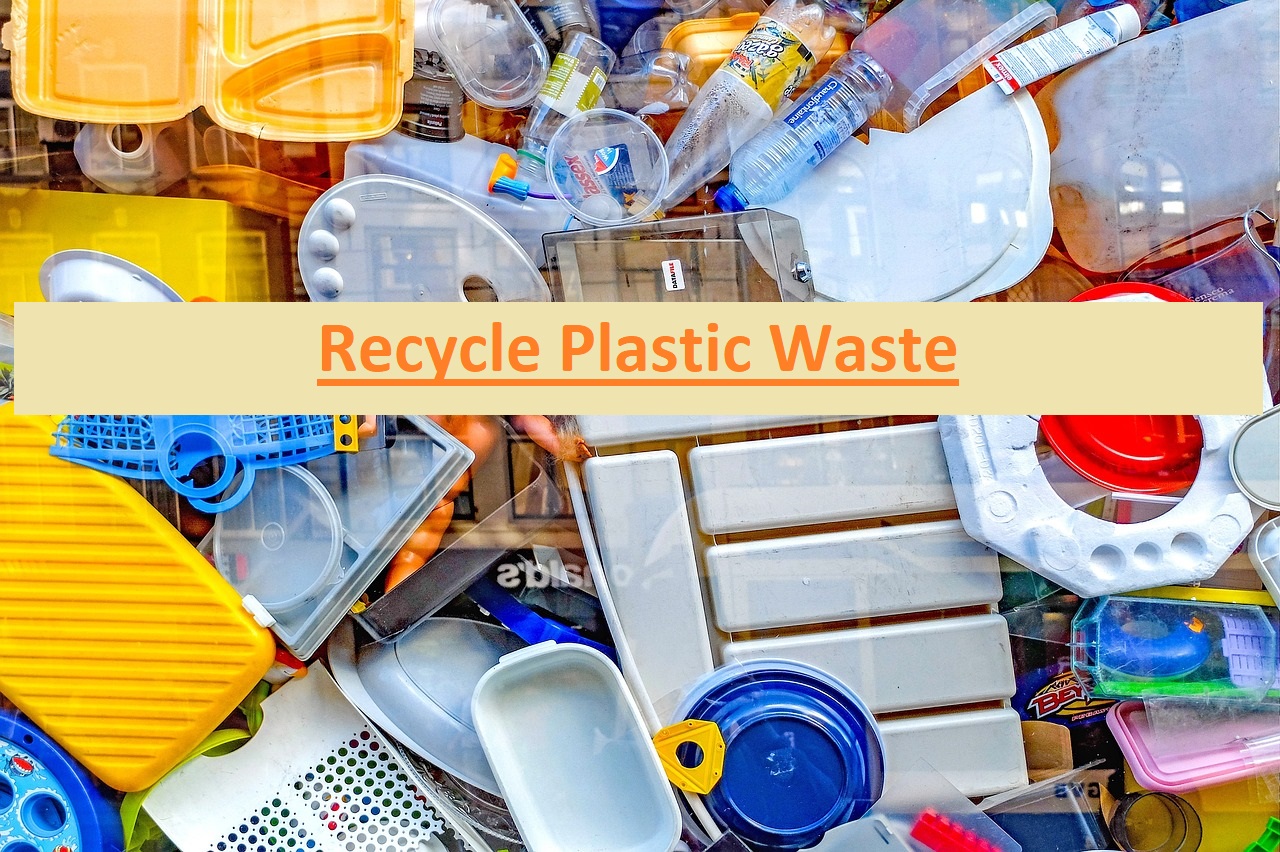Description: Learn how businesses can reduce plastic use and create a Plastic Neutral Business to help improve their plastic footprint. Discover the Plastic Marketplace for selling recycled plastic waste and plastic production waste materials.
Selling on Plastic marketplace have an important part to play in lowering overall plastic consumption and minimizing their own plastic footprints. Companies can not only make a contribution to the sustainability of the environment but also attract clients who are environmentally sensitive by implementing tactics that are beneficial to the environment. Read out this article to know that how can we reuse plastic material, plastic production waste, and recycle plastic waste in a useful manner.
SINGLE-USE PLASTIC
Plastic products that are intended to be used only once before being discarded or recycled are referred to as “single-use plastics.” Another name for this type of plastic is “disposable plastics.” These products are often constructed from inexpensive materials and are designed more for convenience in the near term than for durability over the long term. The word “single-use” relates to the limited lifespan of these products, since they are swiftly destroyed after only a little period of use. This is the meaning behind the term “single-use.”

The following items are typical examples of single-use plastics:
- Plastic bags are frequently utilized for the purpose of transporting groceries or shop items.
- Plastic cutlery consists of cutlery made of plastic, such as forks, knives, spoons, and other tableware designed for a single use only.
- Straws made of plastic are disposable drinking straws that are typically offered with beverages.
- Plastic cups and plates are examples of disposable tableware that can be used for events or for meals taken out.
- PET is the material most commonly used to manufacture single-use water bottles made of plastic (polyethylene terephthalate).
- Food packaging made of plastic includes wrappers, containers, and films that are used to store and transport food products.
- Coffee cup lids made of plastic are often disposable and designed for use with hot liquids.
- Plastic stirrers are short sticks that are intended to be used only once for stirring coffee or other beverages.
Many environmental concerns have been brought about as a result of the pervasive usage of single-use plastics and their subsequent disposal. These artefacts frequently find their way into landfills or are left as litter in natural environments, where the decomposition process can take up to a few hundred years. They are also a contributor to the contamination of the oceans caused by plastic, which is harmful to marine life and ecosystems. As a consequence of this, there has been a growing push to minimize the use of single-use plastics by promoting alternatives that can be reused, establishing prohibitions on the use of plastic, or boosting recycling programme participation.
UNDERSTANDING THE TERM PLASTIC-NUETRAL BUSINESS
A company is considered to be plastic neutral if it has achieved a balance in its plastic footprint and is actively working to reduce the quantity of plastic that it either uses or generates. The idea is comparable to that of “carbon neutrality,” in which businesses “offset” their carbon emissions by investing in initiatives that either remove greenhouse gases from the atmosphere or reduce the amount of greenhouse gases that are released into it. For the purpose of achieving “plastic neutrality,” businesses make amends for the amount of plastic they use either by contributing to cleanup efforts that remove an equivalent quantity of trash from the natural setting or by preventing new plastic garbage from entering the environment.
To transform a company into one that does not use plastic requires a number of processes, including the following:
- Measure: Determine the amount of plastic used or generated in the company’s operations and supply chain by conducting a plastic audit. This will allow you to get an accurate picture of the company’s overall plastic footprint.
- Reduce: Put into action initiatives with the goal of decreasing the amount of plastic used, such as phasing out single-use plastics, switching to environmentally friendly packaging, promoting reusable objects, and improving product design.
- Offset: Investing in programme that collect or prevent garbage from being produced from plastic is one way to “offset” the leftover plastic footprint. This may involve providing financial assistance to organisations that work to reduce plastic pollution, establishing recycling programme, constructing waste management infrastructure, or developing novel technology with the purpose of reducing plastic waste.
- Certify: Obtaining certification from a reputable agency that confirms the plastic-free state of the business should be the first step towards achieving certification. This may include conducting regular audits and providing reports in order to verify continuing compliance with the criteria for plastic neutrality.
- Communicate: Inform customers, employees, and other stakeholders about the company’s commitment to eliminating all use of plastic in its products. This can assist create brand reputation and attract consumers that are environmentally sensitive.
HOW CAN BUSINESSES REDUCE THE PLASTIC USE AND IMPROVE THEIR PLASTIC FOOTPRINT
A reduction in the usage of plastic, the adoption of more sustainable business processes, and the encouragement of environmentally responsible conduct are all necessary steps in the process of improving a company’s “plastic footprint.” The following are some actions that commercial enterprises can take to reduce their use of plastic:
- Conduct an audit
Perform an audit of the company’s use of plastic by analyzing its current plastic consumption and looking for areas in which it might be reduced or replaced with another material.
- Sustainable packaging
To ensure that your packaging is environmentally friendly, select materials that are either recyclable, biodegradable, or compostable. Urge suppliers to adopt similar methods.
- Encourage reusable items
Customers and workers should be incentivized to use reusable things such as bags, bottles, and containers by providing incentives to do so. Those that bring their own reusable things should be rewarded with discounts or other unique offers.
- Optimize product design
Maximize the design of the product by creating goods with few or no plastic components at all, and taking into account all aspects of the product’s lifecycle, such as its ability to be recycled and degrade naturally.
- Reduce plastic in the supply chain
Lower the amount of plastic used across the supply chain by working with vendors to reduce the amount of plastic needed for sourcing, manufacture, and transportation.
- Implement a waste reduction policy
Establishing standards for the reduction of plastic waste and including waste reduction targets into the company’s overall sustainability goals are both important components of a waste reduction policy that should be implemented.
- Educate employees and customers
Through education, open dialogue, and the distribution of promotional materials, you should work to increase people’s knowledge of the negative effects of plastic pollution on the environment and the critical need to cut back on the usage of plastic.
- Promote recycling
Encourage recycling by instituting recycling programme for plastic trash and making sure that recycling bins are readily available and correctly labelled for both staff and customers. Recycling may also be promoted by ensuring that recycling bins are available for use.
- Support and collaborate
Support programme focused at reducing the use of plastic and garbage by collaborating with other businesses, non-profits, and governmental bodies.
- Work with others
Form partnerships with community groups, government agencies, and other businesses in order to develop and support projects that aim to reduce the usage of plastic and the amount of waste it produces.
PLASTIC MARKETPLACE
RawTech Trade is marketplace provide a platform for buying and selling recycled plastic, and offer a wide range of recycled plastic products from raw materials to finished goods. It’s important to carefully research and compare different marketplaces to find the best fit for your business needs, including fees, shipping policies, and customer support, and we completely assure you that our platform will never disappoint the buyers.
CONCLUSION
In conclusion, businesses play an essential part in lowering the amount of plastic that is used and decreasing their own plastic footprint. Companies have the potential to have a significant and positive effect on the environment if they engage in activities such as promoting reusable items, conducting plastic audits, eliminating single-use plastics, adopting sustainable packaging, conducting recycling programme, and conducting engagement with their employees, customers, and suppliers.
In addition, companies that make a public commitment to lessening their use of plastic not only make a positive contribution to the preservation of the environment but also attract the attention of the expanding population of environmentally conscientious customers. To further improve a firm’s commitment to sustainability, the company should consider investing in creative solutions and cooperating with organisations, government agencies, and other businesses to promote programme that reduce the amount of plastic trash.
Reducing the use of plastic and improving businesses’ plastic footprints are crucial measures for companies that want to be responsible and sustainable, and taking these efforts can have long-term advantages for the environment, the reputation of the brand, and the loyalty of customers.

